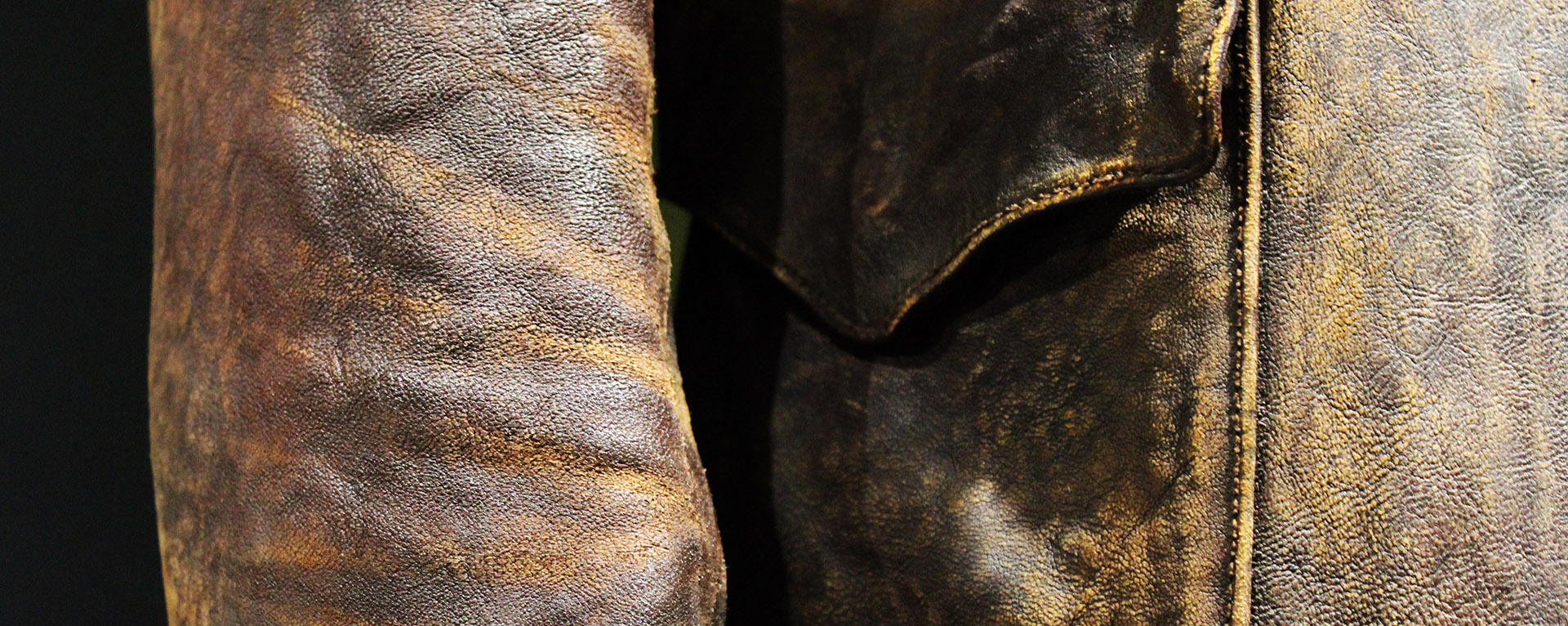History in Objects: Indy’s Leather Jacket
The hand-crafted work of generations of artists goes into one iconic costume piece.
During an early story conference for Raiders of the Lost Ark (1981), George Lucas described the appearance of Indiana Jones, the archaeologist he’d envisioned for Lucasfilm’s newest adventure movie. “The fact is, he is slightly scruffy: khaki pants, leather jacket, felt hat, a pistol and holster with a World War I flap. The other thing we’ve added to him, which may be fun, is a bullwhip.”
Indy’s clothing and accouterments would be essential ingredients to the character’s iconic silhouette on screen. The wardrobe, in fact, forms the audience’s first impression of Indy as he leads a small party through a South American jungle at the beginning of Raiders. Along with the distinct fedora, the dark brown leather jacket strongly communicated his place in the first half of the 20th century, a time when the far-off places of the world became more accessible, and America’s place in the world became more central.
“Indy’s iconic silhouette, featuring broad shoulders and a tapered waist not only enhances the character’s athletic prowess but also encapsulates the timeless allure of Indiana Jones as a cultural icon,” says long time Indy fan and independent researcher, Michael Hills (recently profiled along with his family on this blog). “The Indy jacket nails it. It’s vastly different from any other jacket that you see any other protagonist wear on screen. While Indy’s jacket almost looks a bit oversized because of the exaggerated shoulder seams, it works beautifully for Harrison Ford’s frame. It’s like what Phoebe Waller-Bridge says at the end of the documentary [Timeless Heroes: Indiana Jones & Harrison Ford], Harrison Ford is Indiana Jones. So that silhouette is very much intertwined with the actor who plays him.”
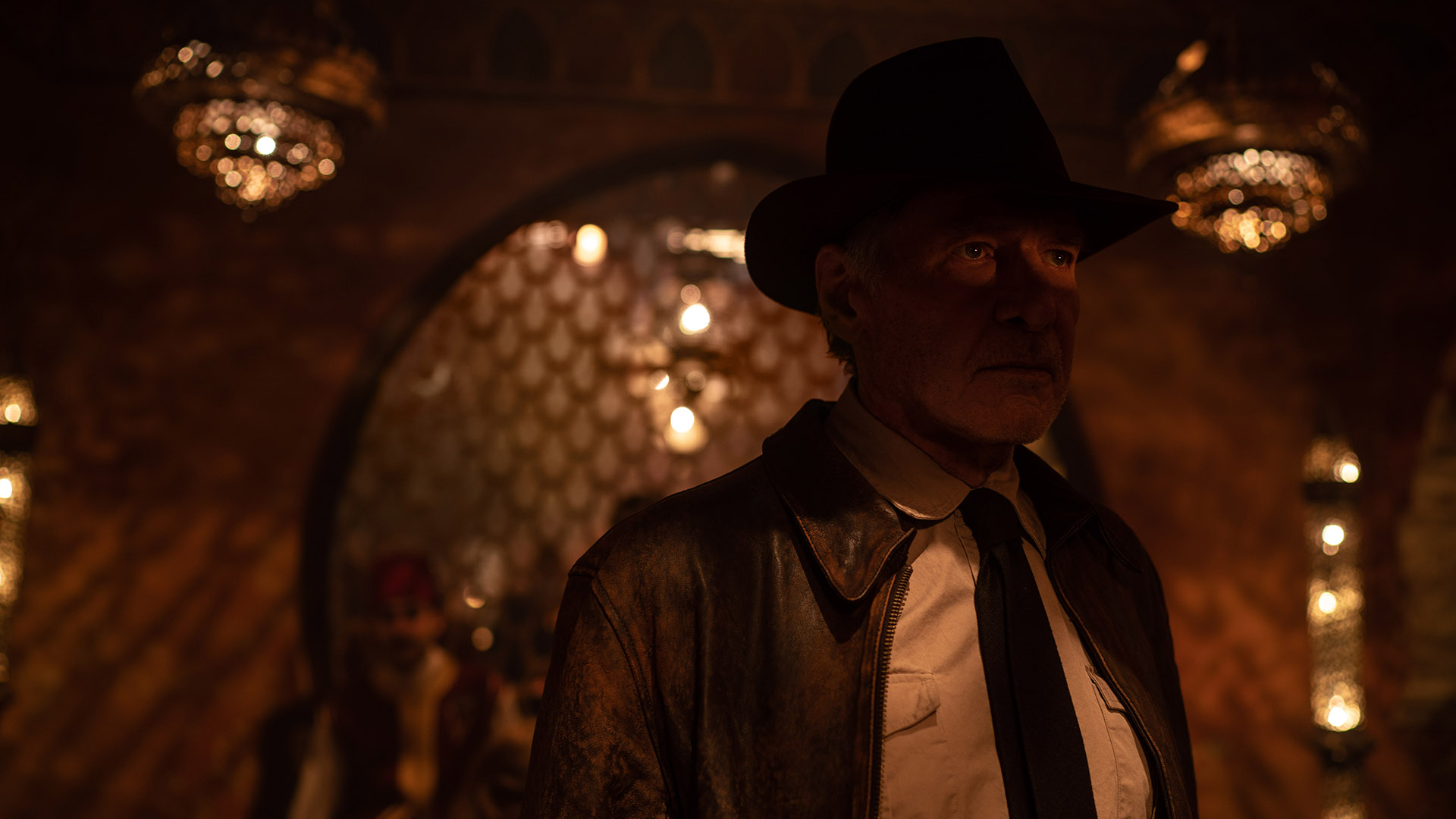
But as Hills also points out, “although Indy is indelibly a fictional American character loved across the globe, his jacket, the actual costume piece has been shaped over the years by both British and American artisans and craftspeople.” When the Raiders production moved to Elstree Studios near London for principal photography, American costume designer Deborah Nadoolman Landis collaborated with English leather specialist Peter Botwright.
The A-2 jacket, sometimes known as the “bomber jacket,” was the chosen style, having become synonymous with American military pilots of the 1930s and ‘40s. Botwright made extensive modifications to match Ford’s build and to allow for the leather gun-belt and coiled whip and holder to hang at his waist, resulting in a noticeably shorter yet tangle-free garment compared to the aviator style jackets. Using tools like a wire brush and Ford’s own pocket knife, Landis aged the jacket by hand to give it a rugged and lived-in feeling. As Hills points out, the Raiders costume piece “is considered by many fans as the definitive and the most beloved version of Indy’s jacket in the franchise because form followed function.”
The fact that there are minute differences in the jacket design between films is a keen insight into the craft of filmmaking. In the fictional world of Indiana Jones, it could be assumed that Indy possesses a sole jacket, inspired by the roguish grave-digger he meets as a teenager in Indiana Jones and the Last Crusade (1989), which, along with his fedora, safari style shirt, leather ankle boots, and wool twill pants, makes up his field attire. The reality that they actually change slightly in appearance between films is in large part a reflection of the creative process and the intent of the individual artists working on each film. Though perhaps noticeable only to dedicated fans, they nonetheless create subtle impressions for the audience from story to story.
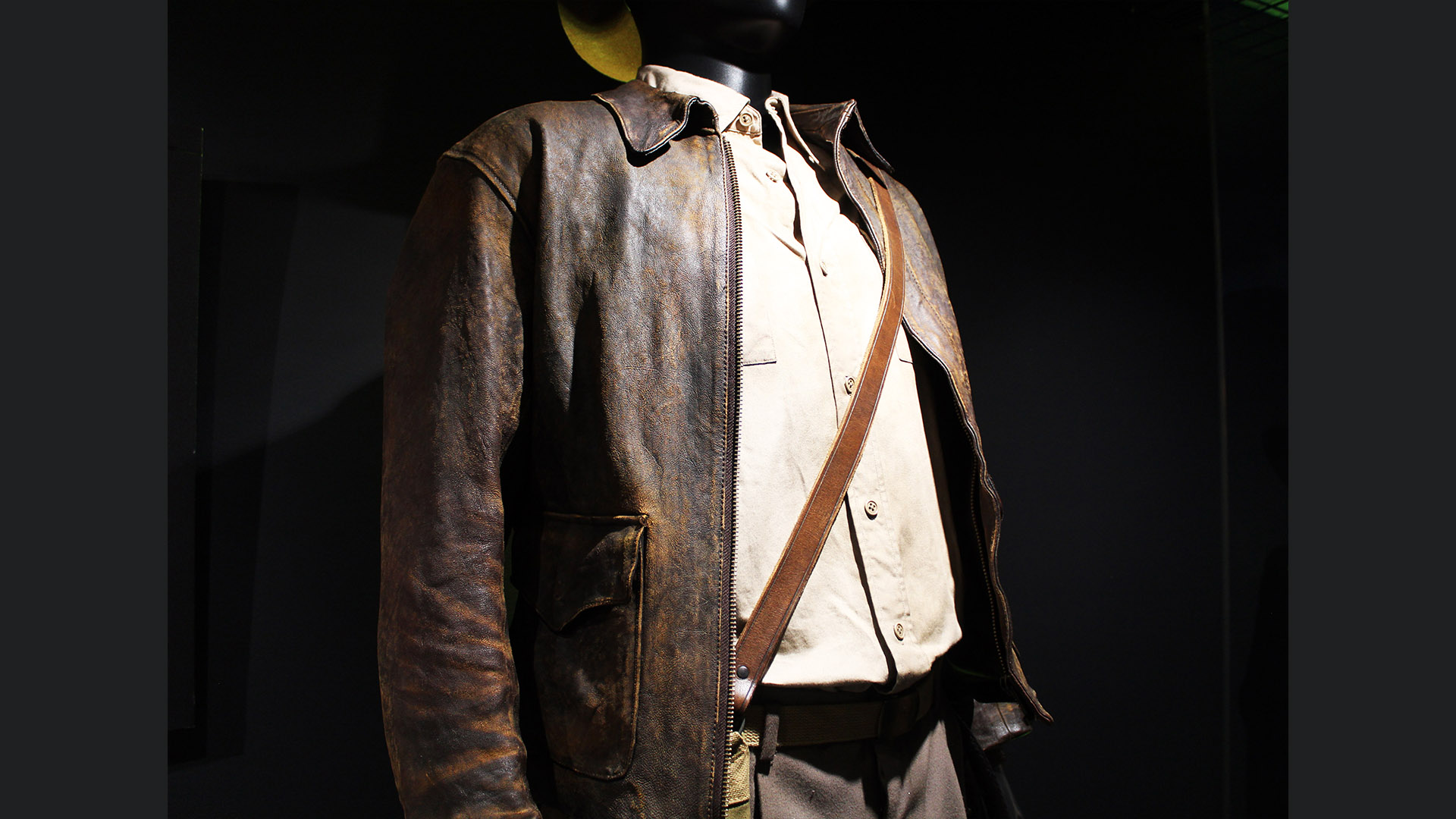
The jacket which appears in Indiana Jones and the Dial of Destiny (2023) is especially poignant along these subliminal lines. Costume designer Joanna Johnston brought a well-established Indy resumé to the project, having worked as an assistant on Indiana Jones the Temple of Doom (1984) and partnering with fellow costume designer Anthony Powell on The Last Crusade. For Destiny, she began by going back to the source, using an original Raiders jacket as the primary reference.
“Joanna has been a part of the family a very long time and has worked with Harrison Ford a lot,” says the Lucasfilm Archives team, who now look after the costumes made by Johnston and her department. “For Indy’s Dial of Destiny outfit, she did a lot of extensive research with the costumes archived at Skywalker Ranch, but she also had her own memories and experiences about how Indy’s costume should look and what alterations would have to be made, given the fact that this is happening decades later.
“Overall, this is the standard leather jacket,” the archivists continue. “There is a cotton lining inside. It appears to be a 100%-tailored jacket. The sleeves had specific aging applied down by the wrists, and when it was delivered to the archive in a flat package, it actually had a string running along the inside on a hanger so that the creases stayed in place. They put a lot of care into not only creating but making sure it was preserved the right way.”
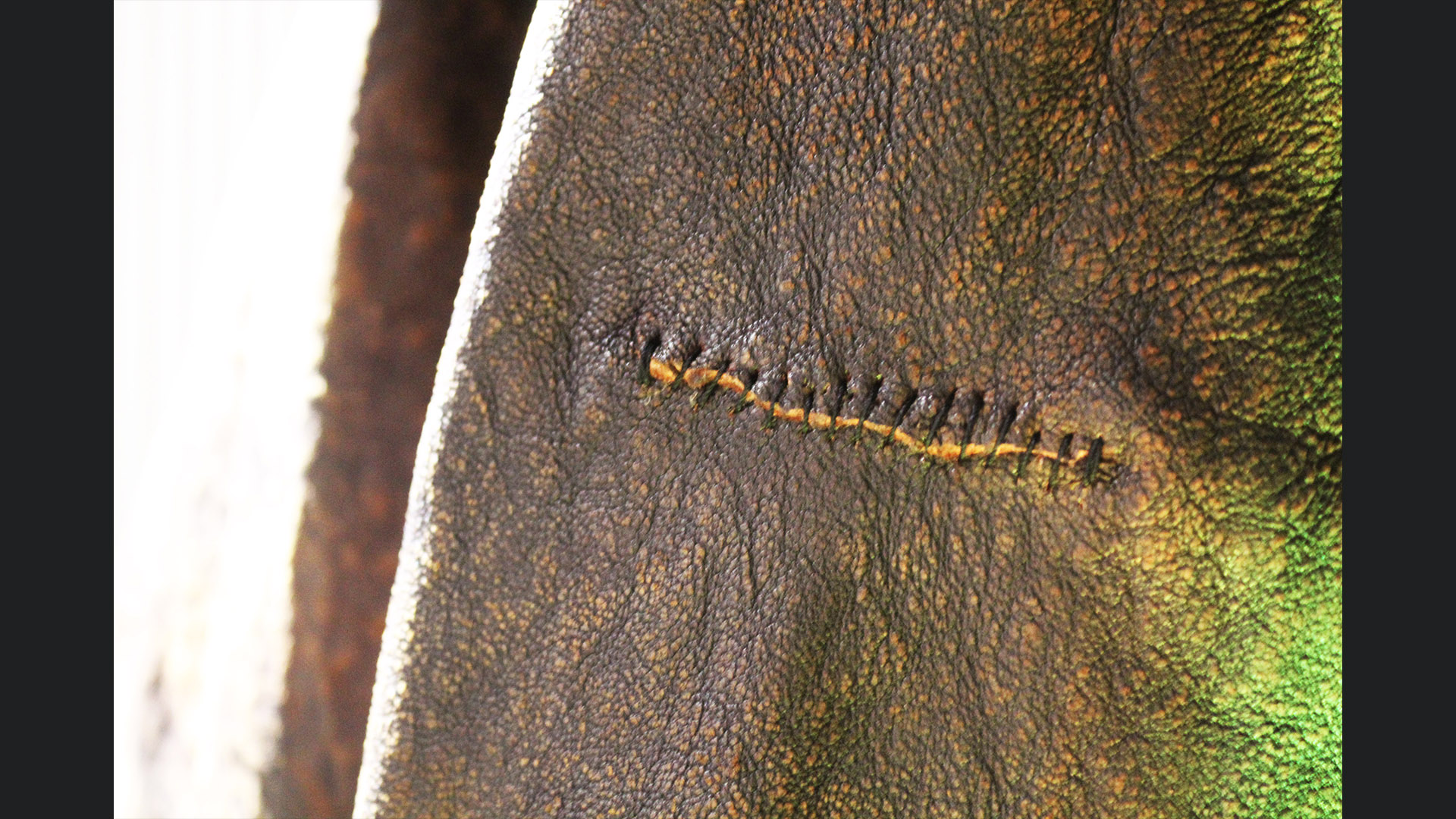
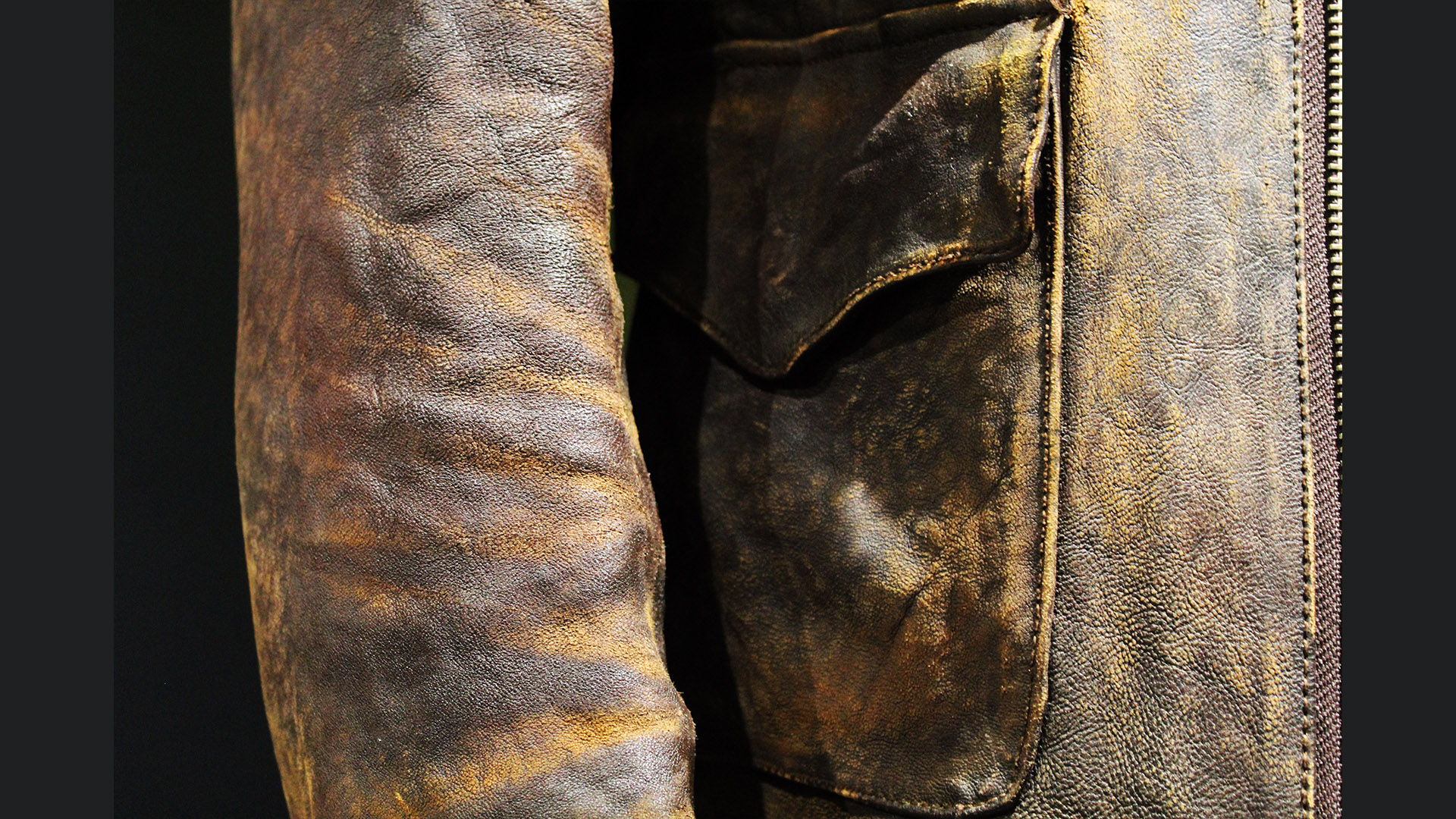
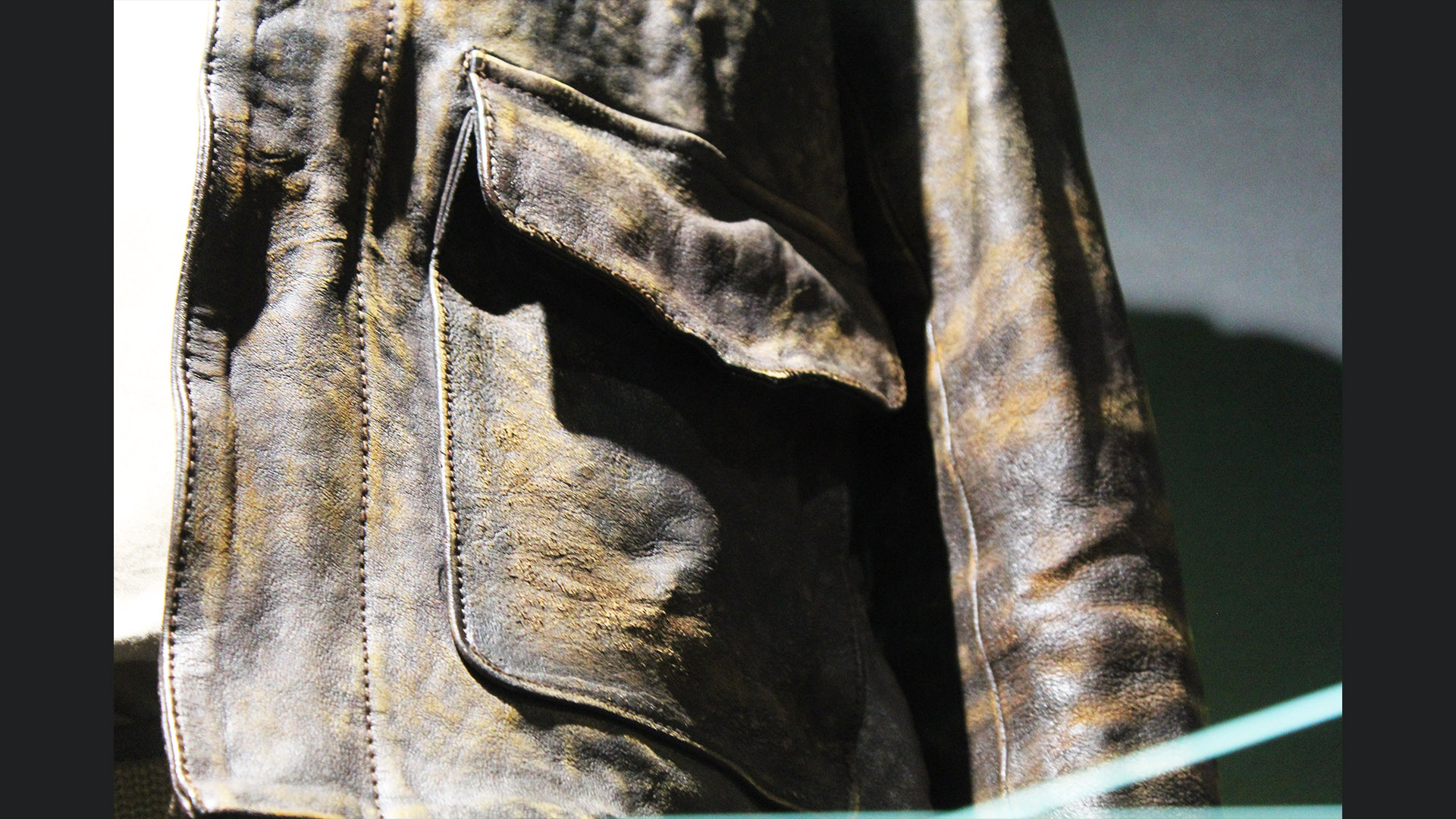
One poignant detail is a tear on the left arm that has been crudely stitched up. This, of course, is where Indy is shot during the memorable truck chase from Raiders. It’s not an homage to the earlier film, but a piece of continuity, and a reminder that, for Indy, this is his one and only jacket. One imagines him hastily sewing it back up and getting on with his adventure. It’s something that a majority of viewers may fail to notice on their first viewing, but representative of how the craftspeople on a film production amass these sorts of details to tell a full story.
In Dial of Destiny, as Hills points out, “the jacket’s role in this final chapter of the franchise has been elevated to symbolize the entirety of Indy’s adventures. While this final version of Indy’s jacket is most like the one we see from Raiders, Johnston revitalized it by enhancing its design proportions. Notably, she incorporated a larger collar reminiscent of the one seen in The Last Crusade, but with more pointed collar tips like those in The Kingdom of the Crystal Skull. Johnston also reintroduced the original side strap configuration from the Landis/Botwright design but replaced the European style two-prong adjusters with larger brass d-rings. By combining all of these elements, she created a unique and timeless piece.”
With a character like Indiana Jones, the work of craftspeople like those in the costume department becomes the ingredients of “cinema history, art, and culture,” as Hills says. “This jacket narrates a tale of adventure, courage, and discovery, captivating millions worldwide. It defines Indiana Jones, and Indiana Jones defines it.”
Lucasfilm | Timeless stories. Innovative storytelling.

